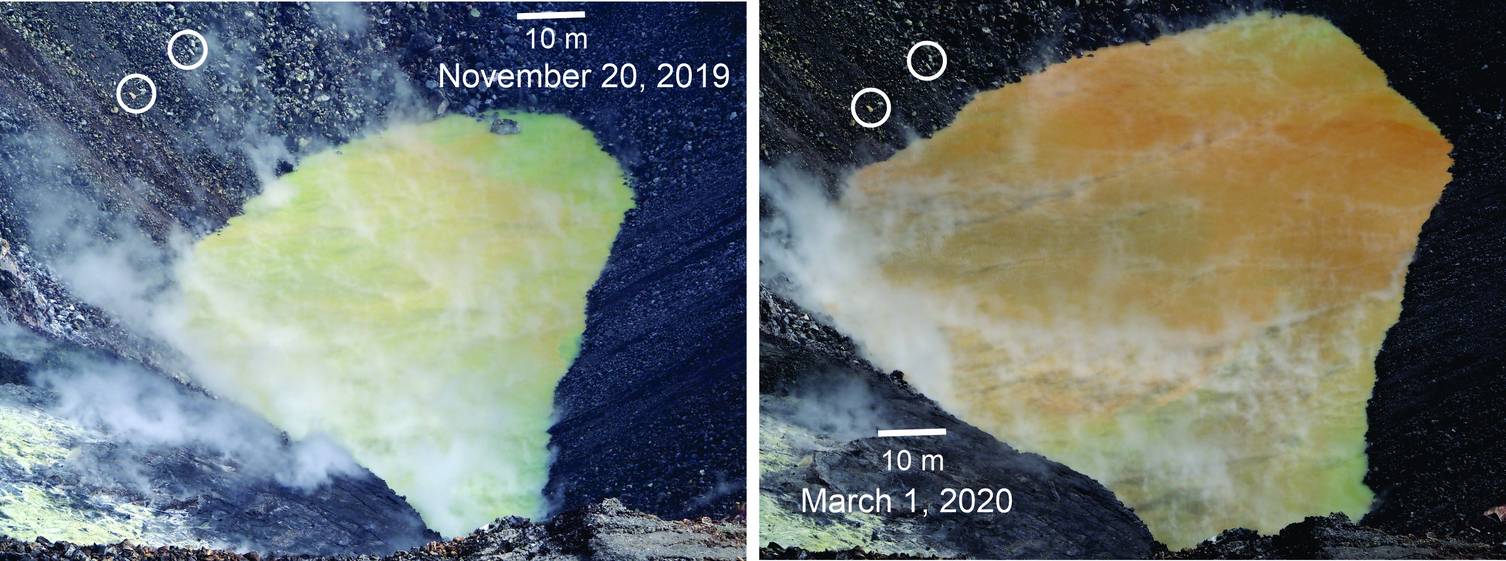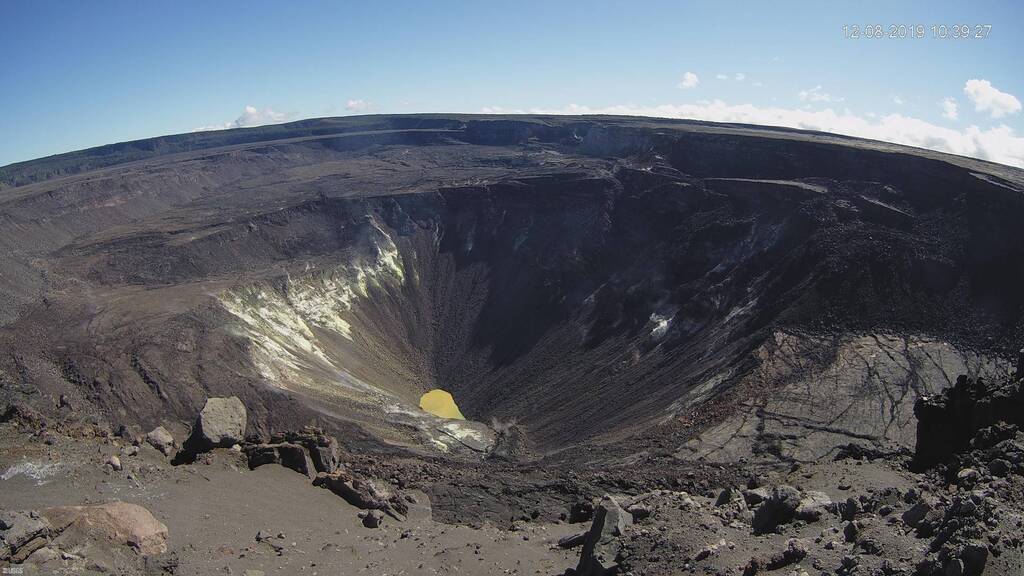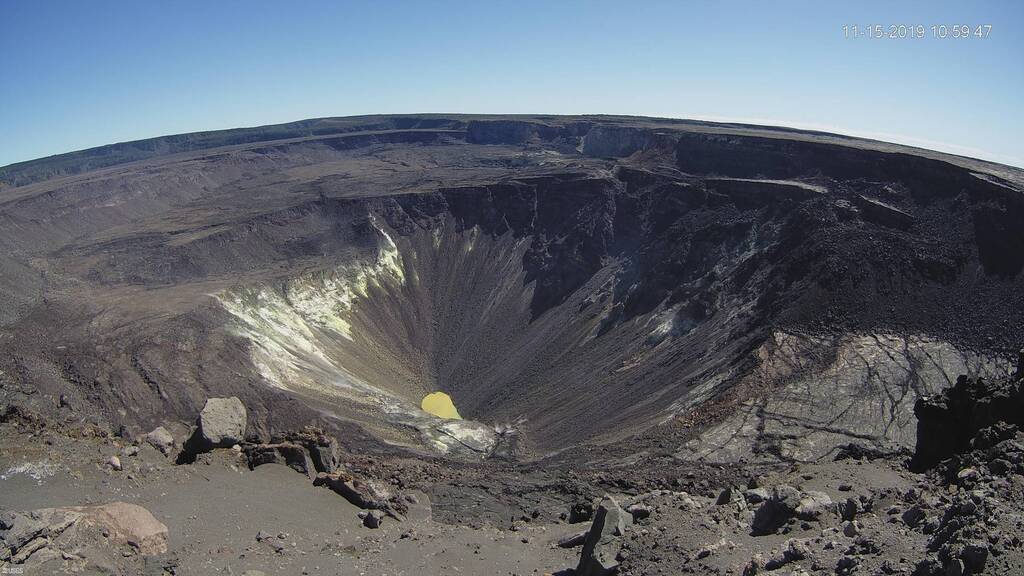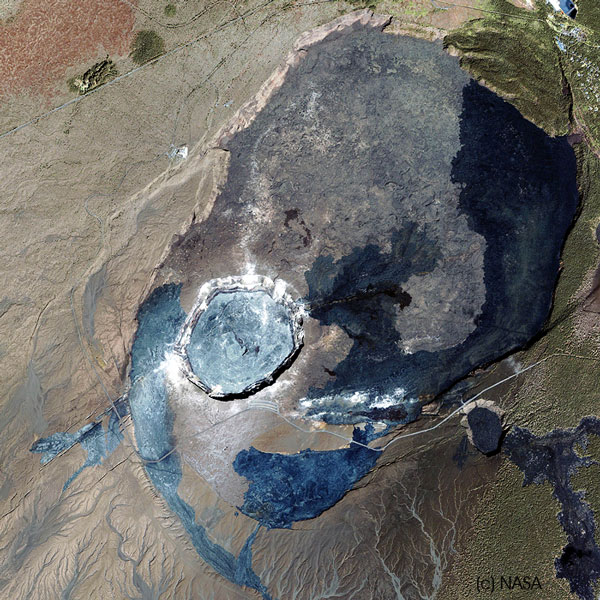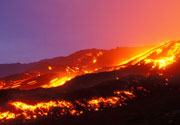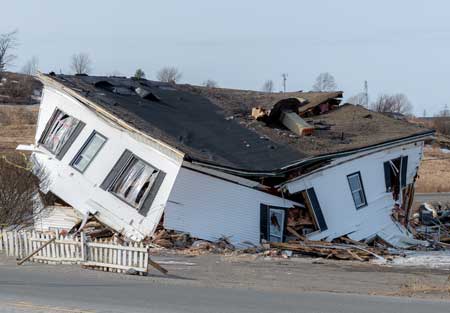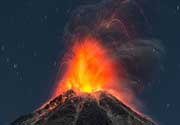Hawaii’s Kīlauea Volcano – an exaggeration of the truth
Sat, 10 Oct 2020, 09:02 | BY: ELEANOR
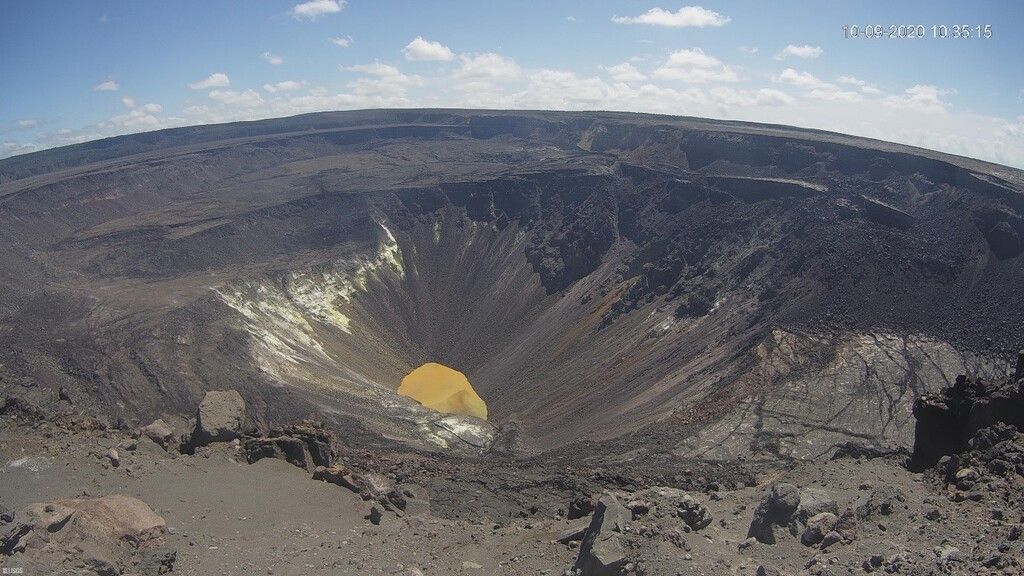
Panorama view of Halemaʻumaʻu water lake taken 09 October 2020 (Image: USGS live webcam)
In 2018, Kīlauea's months-long eruption on the lower East Rift Zone caused devastation across Hawaii's Big Island and transformed the landscape forever as lava flows entered the Pacific Ocean. Enough lava was erupted to fill at least 320,000 Olympic-size swimming pools (Source: USGS) and over 700 homes were destroyed – it is currently ranked as the most dangerous volcano in the United States. The eruptive sequence drained the Halemaʻumaʻu lava lake and shallow magma reservoir, resulting in a summit collapse and formation of a crater more than 500m in depth.
In July 2019, a water lake appeared within the crater and has since been growing. The lake depth currently measures approximately 46 meters and the surface water temperature has maximum values of 80–85 degrees Celsius (176–185 degrees Fahrenheit) – likely a result of residual heat from the rubble at the base of Halema'uma'u. This rubble is from rock that was heated by the lava column prior to the 2018 collapse. The proximal vents (fumaroles) are also attributed to the intense surface temperatures measured. The cause of the water lake formation has been explained by USGS volcanologists as the rebounding of the water table following 2018 volcanic activity whereby the crater floor subsided more than 70 meters below the water table. It is important to stress that this lake is composed of water only, not a new lava lake as some articles are claiming. The orange/ rusty-brown appearance of the lake may give the illusion of lava to the untrained eye but this colouration is simply a result of chemical reactions taking place within the lake itself.
The presence of water within the crater potentially marks a transition in Kīlauea's eruptive style – although effusive volcanic activity is commonly attributed to this volcano, research by Swanson suggests over the past 2,500 years, Kīlauea has in fact erupted explosively approximately 60 percent of the time with an large explosive phreatomagmatic eruption in 1790 causing 400 fatalities. Although Kīlauea's eruptive style cycles between effusive and explosive are not entirely understood, volcanologists believe water originating from sources other than magma likely play a critical role. In this case, future eruptions at this volcano could see a sudden rise in magma through the conduit intersecting the newly formed lake or the crater floor could collapse, causing the lake water to be vaporised into steam therefore creating a phreatomagmatic eruption.
The Hawaiian Volcano Observatory (HVO) will continue to extensively monitor this active volcano through methods such as tracking the lake temperature, seismic, gas, and ground deformation monitoring, and using drones to retrieve samples for laboratory analysis. Thermal monitoring is also used to provide new insights into what's happening in the restless zone below the lake.
Perhaps future news articles should concentrate less on exaggerating the potential deadly nature of this volcano and overlooking fundamental scientific background, but instead shift their focus to Kīlauea's crater lake as an opportunity to improve the scientific community's understanding of how such lakes evolve and interact with magmatic systems below and therefore, in the long term, how it can be used to benefit and adapt current monitoring and mitigation strategies.
- All news about: Kilauea volcano
- Information about: Kilauea volcano
---
Links / Sources:
Links / Sources:
- Forbes article: Hawaii's Kīlauea Volcano Is Turning Into A Deadly Crater Lake (Mack, 2020)
- Science News article by AGU : From Lava to Water: A New Era at Kīlauea (Nadeau, Diefenbach, Hurwitz, and Swanson, 2020)
- HVO Kīlauea Volcano monthly update
Previous news
Fri, 7 Aug 2020, 09:23
Kilauea volcano (Hawai'i): summit water lake continues to rise
The Hawaiian Volcano Observatory (HVO) reported that the volcano's summit water lake has continued to rise since 25 July last year when water was first spotted at the bottom of Halema'uma'u pit crater inside the summit caldera. ... Read all
Sat, 4 Apr 2020, 00:51
Kilauea volcano (Hawai'i): summit crater lake continues to grow slowly
The Hawaiian Volcano Observatory have released the monthly update of activity at Kilauea volcano over the month of March. ... Read all
Show more






